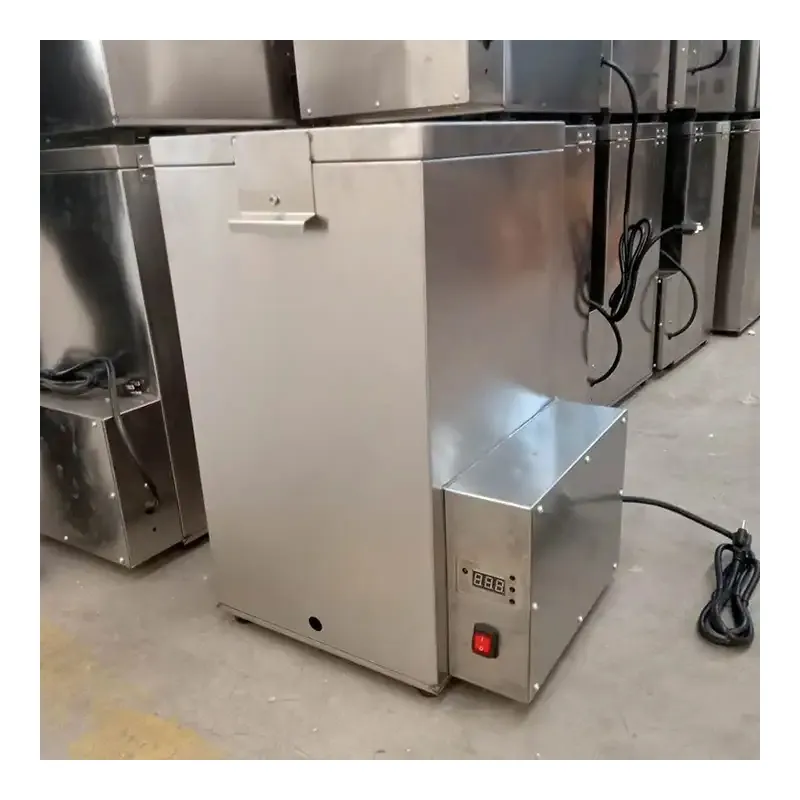High-Quality Aquatic Fish Feed Pellet Mill for Optimal Growth and Health
Dec . 25, 2024 08:33 Back to list
High-Quality Aquatic Fish Feed Pellet Mill for Optimal Growth and Health
The Importance of Floating Fish Feed Pellet Mills in Aquaculture
Aquaculture has emerged as a vital industry to meet the rising global demand for seafood. As fish farming practices evolve, the need for high-quality fish feed becomes increasingly critical. Among the various types of fish feed, floating pellets have gained significant attention due to their numerous advantages. At the heart of producing these floating fish feed pellets is the floating fish feed pellet mill, an essential piece of machinery in modern aquaculture.
The floating fish feed pellet mill is designed to convert raw materials such as grains, fish meal, and other additives into high-quality pellets that float on water. This floating characteristic plays a crucial role in fish feeding behavior, making the feed more accessible and reducing waste. Traditional sinking feed often lowers the feed consumption efficiency because fish tend to forage in the upper water columns. Consequently, floating feed enhances feeding activity and growth rates in farmed fish.
One of the primary advantages of using floating fish feed is that it reduces water pollution. When fish feed sinks, it can lead to the accumulation of uneaten particles on the bottom of the tank or pond, which can decompose and cause detrimental environmental impacts. Floating pellets, however, remain on the water surface, allowing for better monitoring of feed consumption and more efficient cleanup of leftovers. This not only keeps the aquatic environment cleaner but also minimizes the cost associated with water quality management.
The efficiency of production is another key benefit associated with fish feed pellet mills. These machines are engineered to handle a variety of ingredients and produce pellets in large volumes. The process typically involves grinding raw materials into a fine powder, mixing them evenly, and then conditioning the mixture with steam and heat. This process ensures that the nutrients are well-preserved and the pellets have a uniform size and density. After conditioning, the mixture is extruded through a die to create the desired pellet shape and size, which can then be dried to achieve the desired moisture content.
floating fish feed pellet mill

In addition to optimizing feed quality, floating fish feed pellet mills contribute to resource sustainability in aquaculture
. The use of alternative protein sources, such as insect meal or plant-based ingredients, is becoming more popular as the industry seeks to reduce reliance on fish meal, which can put pressure on wild fish stocks. Pellet mills are adaptable and can efficiently handle these alternative ingredients, thereby promoting sustainable practices within the sector.Moreover, the customization possibilities offered by floating fish feed pellet mills are a significant advantage for fish farmers. Different fish species have unique dietary requirements, and pellet mills can be adjusted to formulate feeds that cater specifically to these needs. By altering the ingredients and pellet size, farmers can create specialized feeds that enhance growth rates, improve immune response, and promote overall fish health. This tailored approach not only benefits the fish but also increases the profitability of aquaculture operations.
As the global aquaculture market continues to expand, the demand for efficient, high-quality fish feed is expected to grow. Floating fish feed pellet mills will undoubtedly play a pivotal role in meeting this demand. By providing sustainable, nutritious, and effective feeding solutions, these mills are integral to the future of fish farming.
In conclusion, the floating fish feed pellet mill is a cornerstone technology in aquaculture, facilitating the production of feed that enhances growth, reduces waste, and supports environmental sustainability. As the industry continues to innovate, these mills will remain crucial in providing the necessary resources to feed a growing population while preserving aquatic ecosystems. For fish farmers seeking to enhance their operations, investing in a floating fish feed pellet mill represents a forward-thinking approach to sustainable aquaculture.
-
Hot Sale 24 & 18 Door Rabbit Cages - Premium Breeding Solutions
NewsJul.25,2025
-
Automatic Feeding Line System Pan Feeder Nipple Drinker - Anping County Yize Metal Products Co., Ltd.
NewsJul.21,2025
-
Automatic Feeding Line System Pan Feeder Nipple Drinker - Anping County Yize Metal Products Co., Ltd.
NewsJul.21,2025
-
Automatic Feeding Line System - Anping Yize | Precision & Nipple
NewsJul.21,2025
-
Automatic Feeding Line System - Anping Yize | Precision & Nipple
NewsJul.21,2025
-
Automatic Feeding Line System-Anping County Yize Metal Products Co., Ltd.|Efficient Feed Distribution&Customized Animal Farming Solutions
NewsJul.21,2025






